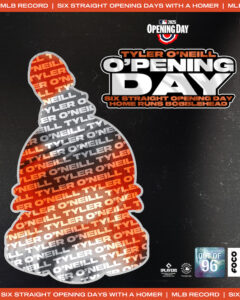The Orioles saw a potential 2022 Wild Card berth nudge another game out of reach on Thursday, as they lost 3-2 in a make-up game with the Chicago Cubs. Now don’t get me wrong, sitting two and a half games out of the playoffs in mid-August isn’t exactly a hopeless situation, especially for a team that wasn’t expected to be within a country mile of the postseason to begin with.
But yesterday’s loss felt more catastrophic than it actually was, probably because it should have never have happened.
Scoreless in the fifth inning, the Orioles seemed to have something cooking with a first-and-third one out situation and Jorge Mateo at the plate. Manager Brandon Hyde decides to put on a safety-squeeze with Mateo laying a bunt down the third base line. Austin Hays breaks for home on contact and is (controversially) called out at the plate. It was an exceptional play by the pitcher, a terrible tag by the catcher, and a seemingly wrong call by the umpires on the play and subsequent review.
But it’s not the result of the play that I think is worth analyzing. Rather, it’s the play call itself.
From 2015 through this season, there have been 633 sacrifice attempts with less than two outs and runners on first and third. Of those 633 attempts, 284 of them resulted in an RBI. This tells us that you can probably count on an RBI roughly 45% of the time you call this play in this situation. Further, the run expectancy of a first and third with one out situation is 1.22, while the run expectancy of a first and second with two outs situation is 0.466. Which means you’re risking 61% of your run expectation on a play that wins less than half of the time. It’s an easy no.
On a more macro level, over the course of a season this play call in this scenario results in a -3.3 WPA (Win Probability Added) and a -39 RE24*. Meaning this play mostly results in a negative and isn’t worth doing. Late in the game if you absolutely need one run, it’s possible that the scenario becomes more worth the risk, but early in games (even in the 7th or maybe 8th) you wipe out the chances of giving yourself a big inning or scoring multiple runs for a less than half a chance at scoring one. It’s not a good decision.
Fast forward to the bottom of the ninth, the Orioles are now down 3-2 with the bottom third of the order due up. Orioles Magic begins to do its thing as Hays is gifted first base on a throwing error. Fan favorite and late inning flag court legend Rougned Odor steps into the box. In 28 high leverage situations this season after the 7th inning, Rougie is slashing .360/.393/.880 with a 1.273 OPS and an absurd 246 wRC+.
It’s go time baby, full send. Only, Hyde puts on the sac bunt to advance Hays to second. Odor squares, pops out, then two hitters and one double play later the game is over and in the loss column.
Put aside for a moment that Odor is creating runs at 146% above league average rate in these situations; the entire idea of sacrificing one of your last three outs to move a runner to second is flawed. Once again, we can look the run expectancy of the two situations. Runner on first with no outs has an RE of 0.934 and a runner on second with one out has an RE of 0.713. The decrease is small, but a clear signal that the out is more valuable than the runner on second in that situation.
A manger’s job is to put their team in the best position to win games. I’m not sure what Hyde is doing, but he is objectively not doing that. By injecting himself into these situations, he’s actively cratering run expectancy and win probability from the bench. This loss felt so catastrophic to me because even with all of the needs I see being addressed on the field, this was a blatant reminder that a major need is going unnoticed in the dugout.
Simply put, this type of decision making will cost us the type of games we’ll need to win in the postseason when we get there.
I don’t know what the organization’s future plans are for Hyde. Even now I’m hearing his name mentioned in Manager of the year talks, and I can’t help but think about the scenes in Moneyball where Art Howe is actively torpedoing architecture built by Billy Beane. The team’s growing success gets portrayed in the media as some sort of Rumpelstiltskin act, yet Howe is none the less credited with tremendous coaching despite his own incompetence. I feel like that’s exactly where were at with Hyde. He may be a great “clubhouse guy” but his in-game skills as they are, wont win ‘ships.
This isn’t the first time I’ve written about this (see here). Hopefully the organization is at least providing him with analytical insight, and at most will start to direct him to adhere to it in decision making a bit more.
Because it would be a shame to watch this organization be made to sacrifice everything they’re working so hard to build.
*RE24 Base-out Runs Added: Given the bases occupied/out situation, how many runs did the batter or baserunner add in the resulting play. Compared to average, so 0 is average and above zero is better than average.
Data sources: Fangraphs; Baseball Prospectus: Stathead (BR)









